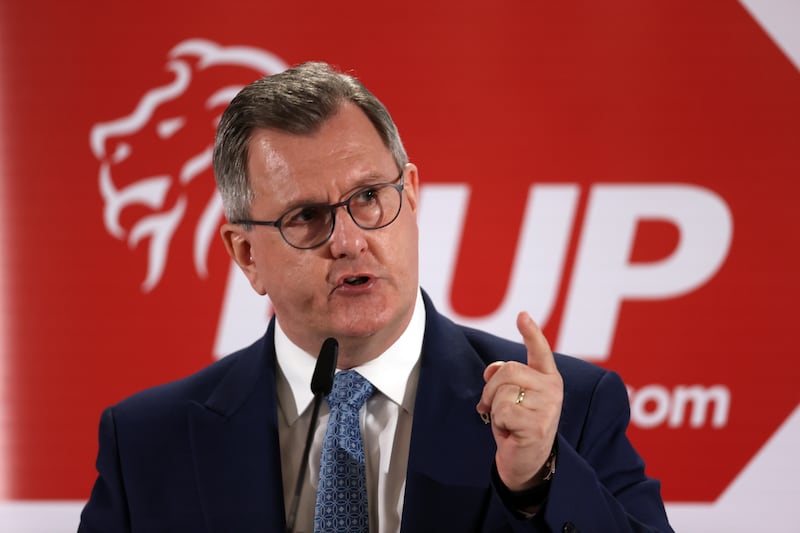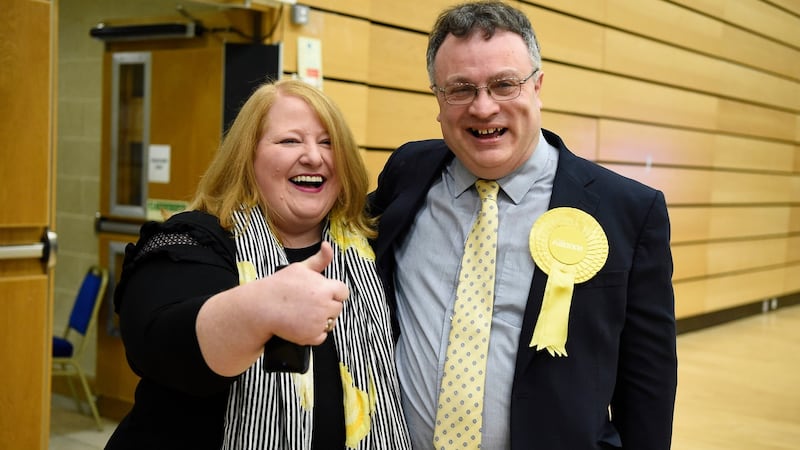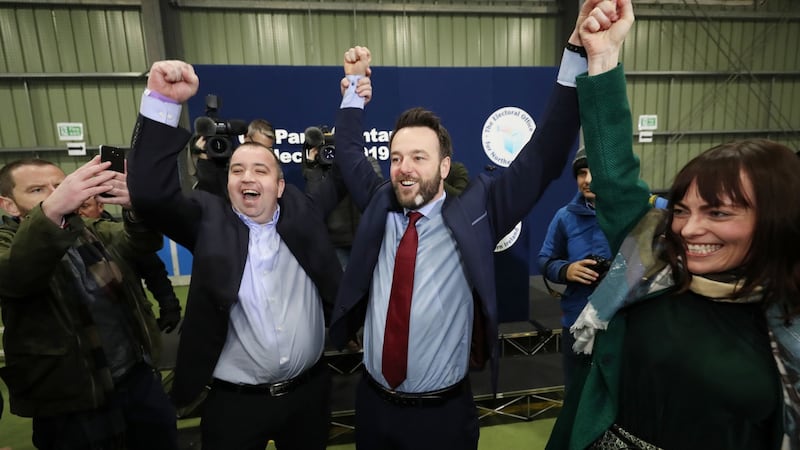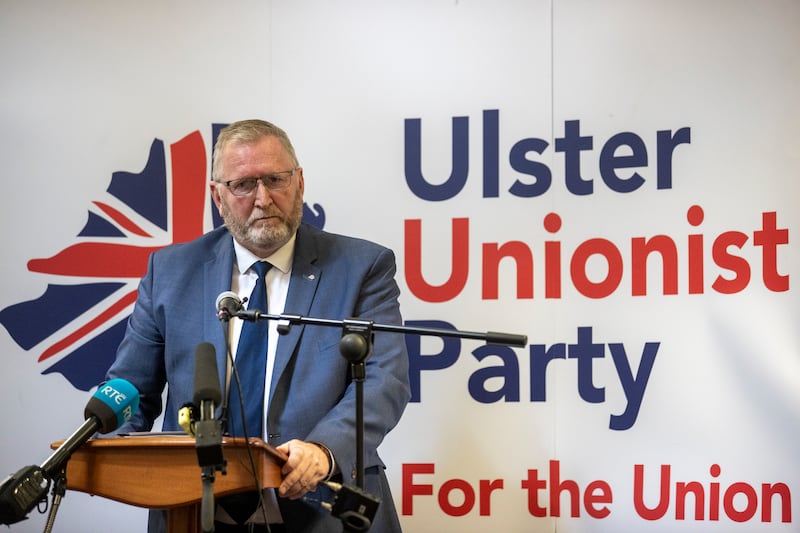People in Northern Ireland will on Thursday vote to elect 462 councillors in 11 council areas. Counting will begin on Friday morning and is expected to take two days, with the first results expected on Friday afternoon and the last on Saturday night — or even early on Sunday morning. You can keep up to date with the results on irishtimes.com.
Whether you’re getting the popcorn in for a 48-hour results marathon or will be keeping only a casual eye on proceedings, here are our five things to look out for:
How will the DUP perform?
If the casual observer knows anything about Northern Ireland politics, it is that there is no functioning Assembly or Executive. This is down to the DUP, which refused to go back into the powersharing institutions after last year’s Assembly election as part of its protest against the post-Brexit Northern Ireland protocol.
With the DUP still on the outside — the compromise agreement between the European Union and United Kingdom, the Windsor Framework, “does not deal with some of the fundamental problems”, according to party leader Jeffrey Donaldson — the result will be seen as a de facto referendum on its stance.
RM Block

If its vote holds up, it will give the DUP confidence, and arguably embolden its efforts to, as it puts it, “finish the job of fully restoring NI’s position in the UK” before returning to the Assembly.
If it takes a hit at the expense of the more hardline Traditional Unionist Voice (TUV), it will find it harder to go back in. On the other hand, if it loses votes to the Ulster Unionist Party (UUP) or Alliance, the DUP could be encouraged into a swifter return to Stormont.
Who will emerge as the largest party?
This may be a local election, but it is about more than local issues. Up for grabs is the position of the largest party in local government in Northern Ireland, held by the DUP. But — if polls are correct — it is likely to be overtaken by Sinn Féin.
Such a victory would, in the words of Prof Jon Tonge from the University of Liverpool, put Sinn Féin “on the way to completing the set” — last year it became the largest party in the Assembly and this would give it the same status in two out of three contests, the third being the Westminster elections.
Though unionism has grown used to such shocks in recent years, this would be another change that many would once have thought unthinkable and would serve as a further reminder that the ground on which unionism stands is receding.

For Sinn Féin, it would be yet more reassurance that their support is growing and further reinforce the position it gained in the Assembly election and the sense of unfairness that Michelle O’Neill has not been able to take up her seat as First Minister because of the DUP’s boycott at Stormont.
As O’Neill said at her party’s manifesto launch: “This election is an opportunity for people to re-endorse the position which they voted for last May.”
Can Alliance keep surging?
This was a characteristic even of the last council election in 2019, in which the party — by far the largest of those which does not designate itself as unionist or nationalist — gain 21 seats.
Its vote share of 11.5 per cent then was 2 per cent lower than what it polled in last year’s Assembly election, when the party did so well it found itself searching for a term to describe something even bigger than a surge.
Alliance is confident going into this election, so much so that they are running candidates — particularly west of the Bann — in areas where it has traditionally struggled to make an impact.

The questions on results day will be just how well Alliance does, and where this increased vote will come from — most likely from the SDLP and UUP.
How will the smaller parties do?
This is another way in which the North’s electoral landscape has changed over time: the UUP and SDLP, once the largest parties of unionism and nationalism respectively, are now the “smaller parties”.
Though there have been anomalies — not least SDLP leader Colum Eastwood’s colossal victory over Sinn Féin incumbent Elisha McCallion in the Westminster election in Foyle in 2019, when he took 57 per cent of the vote — the broad picture for the parties has been one of electoral decline.

Both lost seats in the 2019 council election; at his party’s election manifesto launch last week Eastwood said it would not be a “bad day”, that the party had been getting “a very good response” on the doors and the record of its candidates in local government will pay off. But he also acknowledged a “difficult context” — anger at the lack of an Assembly and the potential for nationalist voters to rally behind Sinn Féin.

In the Assembly rankings, they have now slipped to fourth and fifth, and it seems likely Alliance — which took 53 seats last time compared to the SDLP’s 59 — will overtake it; whether the UUP, on 75, can keep ahead will depend on how much Alliance gains and where those gains come from.
How will turnout effect the outcome?
Whatever the election, the parties still need people to come out and vote for them.
Turnout is traditionally lower in council elections and this has been a low-key campaign. It is hard to convince people elections matter when the Assembly, the seat of devolved government in Northern Ireland, is sitting empty.
That said, as David McCann, deputy editor of the Slugger O’Toole political website notes, there was a similar expectation in 2019 and yet turnout was a reasonable 53 per cent.

The question will be who turns out to vote. In 2019, the three council areas with the lowest turnout were Ards and North Down at under 44 per cent, Mid- and East Antrim was 48 per cent, and Antrim and Newtownabbey was 49 per cent — all unionist majority councils.
The highest turnouts were in Fermanagh and Omagh (62 per cent), Mid-Ulster (60 per cent) and Derry and Strabane (57 per cent) — all nationalist majority councils.
“That gives an indicator of who voted and who didn’t, and last time that depressed unionist turnout benefited Alliance,” says McCann.




















